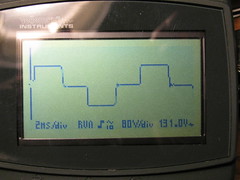Digital Music Jargon Explained – Dithering
As part of a series which aims to explore some of the terminology behind music technology (particularly in relation to computer-based workstations), this week’s glossary contribution confronts the bitty details of dithering…
Dallying With Dithering
Most producers only really think about dithering when bouncing down the final master of a recording; this is the very last stage of production, usually converting a 24 or 32-bit stereo file to a 16-bit file for encoding to CD.
However, dithering is actually extremely common in the digital domain – it’s just that it is usually handled automatically by the various converters, processors and algorithms in the studio, and remains very much behind the scenes. Dithering is usually applied by any process that transforms the signal in some way.
What Is Dithering?
To put it bluntly, dithering is the adding of noise to an audio signal, with the aim of reducing unpleasant distortion.
In the digital domain, low-level signals are particularly susceptible to finite wordlength artefacts. The lower the bit-rate, the more prominent these artefacts become.
Keeping Within Range
In a 16-bit recording, we have a 96 dB dynamic range with which to encode music. This is great for loud signals. However, when the amplitude of the audio decreases, we have fewer bits available to encode the waveform – for example, during a fade out, the available bits reduce gradually until we only have one bit to encode with.
Now, this is basically an on-off sort of square wave, which is extremely unpleasant on the ear.
Relating To Distortion
For any given bit depth, the quieter the signal, the higher the level of relative distortion. To avoid noticable distortion in low level signals, it is preferable to add some smoothing noise to the signal – it’s a trade-off, adding mildly undesirable hiss in order to remove far less desirable harmonic and intermodulation distortion.
There are a huge variety of algorithms out there that calculate this noise in slightly different ways – this is what makes one dithering process sound better (or worse) than another. However, even the simplest dither is preferable to truncation. The dithering effectively spreads and rounds the errors across a broader range by creating broadband noise around the least significant bit.
It’s always best to produce music at least at 24-bit quality – this provides 144 dB of dynamic range, and ensures that dithering artefacts are effectively inaudible. Any reduction to 16-bit should only be done as the final step in the process – and should always be performed using dithering.

